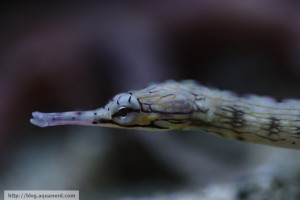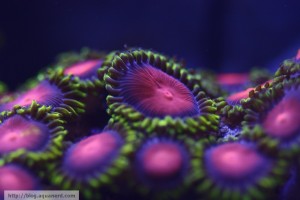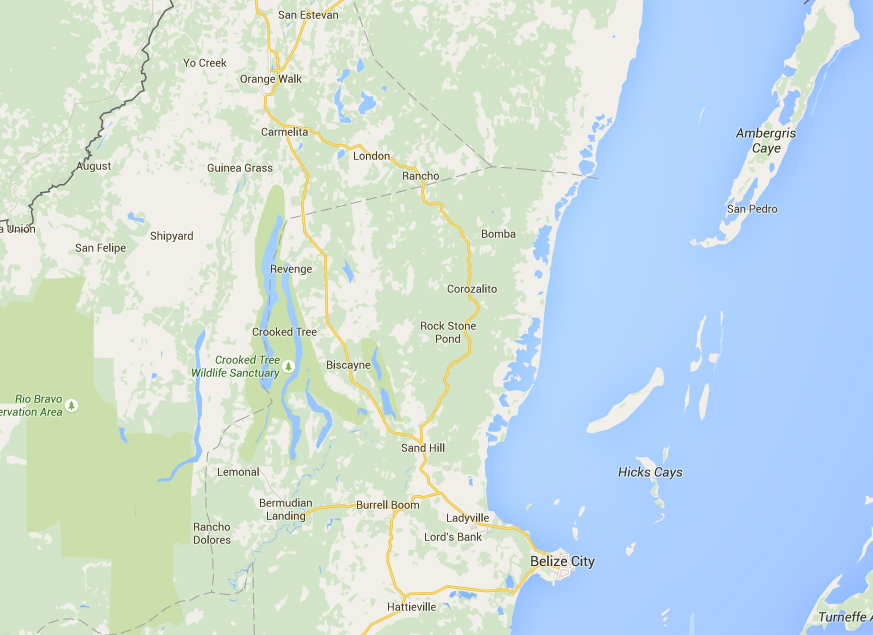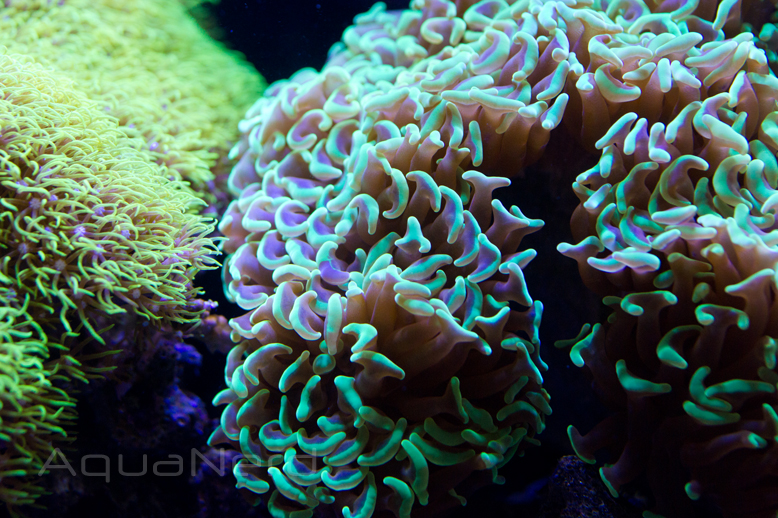This is Part 3 of a multi-part series on aquarium photography. In Reef Aquarium Photography – Part 1 we discussed a little about the camera, as well as some of the equipment used to help you get quality shots. In Part 2 we discussed the actual camera modes and settings used to get great shots. This part will focus on some specialty lenses used to get up-close and wide-angle shots, as well as a couple of others.
The proper lens can make or break a good aquarium photo. Bad lens selection can lead to shots that don’t look very good and require a lot of touching-up with picture editing software. Some software tweaking can virtually replace a macro lens or even a wide-angle lens, but you will certainly lose some quality with these methods. Below is a brief description of macro lenses and wide-angle lenses.
Lens Selection
There are a ton of different lenses on the market for DSLR cameras. They each perform a different function and can range in price from $50 to well over $1000. Since aquarium photography is very specific niche, we won’t need to cover too many lenses and can focus more on a select few.
Taken with Canon 18-55mm lens
Your DSLR will probably come with a standard 18-55 mm lens, or something very close to that. These lenses are decent for casual use and can even take pretty good aquarium photos. But they are very limited in many respects. Their f-stop is usually higher than you would like and they can’t get the up-close shots that macro lenses can get. If you want to take a full tank shot you are also limited with this lens. For the amateur photographer, the following list of lenses should get you great aquarium pictures. You don’t have to go out and buy them all, instead focusing on the lens to get you the specific view you want.
The Macro Lens
The macro lens is one of an aquarium photographer’s greatest tools. It can get spectacular up-close shots and reveal details that often go overlooked. This lens has pretty low f-stop, somewhere in the mid to low 2’s, allowing you to blur out all of the surrounding livestock and focus only on the subject. Another benefit to the macro lens is that they have a focal lengths ranging from 50mm to 180mm or more. This allows you to get close to the subject and still take pictures that aren’t blurred. Another important distinction is that macro lenses operate at their sharpest when focusing over small distances (i.e. up close). You can take pictures of objects farther away, but the resulting image might not be as sharp.
Taken with Canon EF 100mm f2.8 macro lens
When selecting a good macro lens, try go get something with a decent focal length and a low f-stop. I prefer the Canon EOS EF 100mm, which has an f-stop of 2.8L and a focusing distance of just under a foot. It’s a slightly pricey lens, costing more than my entire camera did, but it takes great shots. Other good macro lenses can have a smaller focal length and still get great shots, but the higher the focal length the closer you are to the action. My dream lens is the Canon EF 180mm f/3.5L Macro, but I find it hard to justify spending $1600 on a lens just to take pictures of corals.
Taken with Canon EF 100mm f2.8 macro lens
To take a good macro photo, you need a lot of patience. These lenses typically have a slow focus, so it’s probably best to take pictures of slow moving or still objects like corals. Additionally, you must take the picture head-on. It’s very difficult to take a picture through the glass at an angle, so get the lens parallel to the glass. A tripod is not required, but it will certainly help.
Wide-Angle Lenses
There a two lens types in this class, the standard wide-angle and the fisheye lens. I’m not as well versed in the field of wide angle lenses, but I know they can take great shots. The fisheye lens is of particular interest to me. It takes extremely wide-angled pictures and distorts the image hemispherically. To gain an insight to the distortion, imaging looking into a concave mirror (bent mirror), the type they have at gas stations and various drivethroughs. This lens is not necessarily designed for aquarium photography, but you can get some awesome pictures from it.
The typical wide-angle lens has a much shorter focal length than the normal lens. This allows for the image to be very wide, capturing more of the environment. This sort of lens would be very useful in getting a full tank shot (FTS) of a very large aquarium…and especially public aquariums. Image being able to stand close to the subject of the picture, but still being able to get a lot of the environment immediately in front of the camera and its periphery. Some cropping may be required on an FTS to get rid of unwanted equipment, but you can get much better detail than with a standard 18-55mm lens. Wide-angle lenses can be quite expensive, with the cheapest being around $250 and a fairly large focal length. The dream lens for this class would be one with a focal length of 14-15mm, allowing for extremely wide angle shots.
This will wrap up the lens section of our story. There are a lot of lenses out there, but most of them are telephoto lenses of varying degrees. Our little niche of photography really only warrants two lenses, as mentioned above.










Pingback: Reef Aquarium Photography - Part 4 (The Use of Aperture) | AquaNerd()